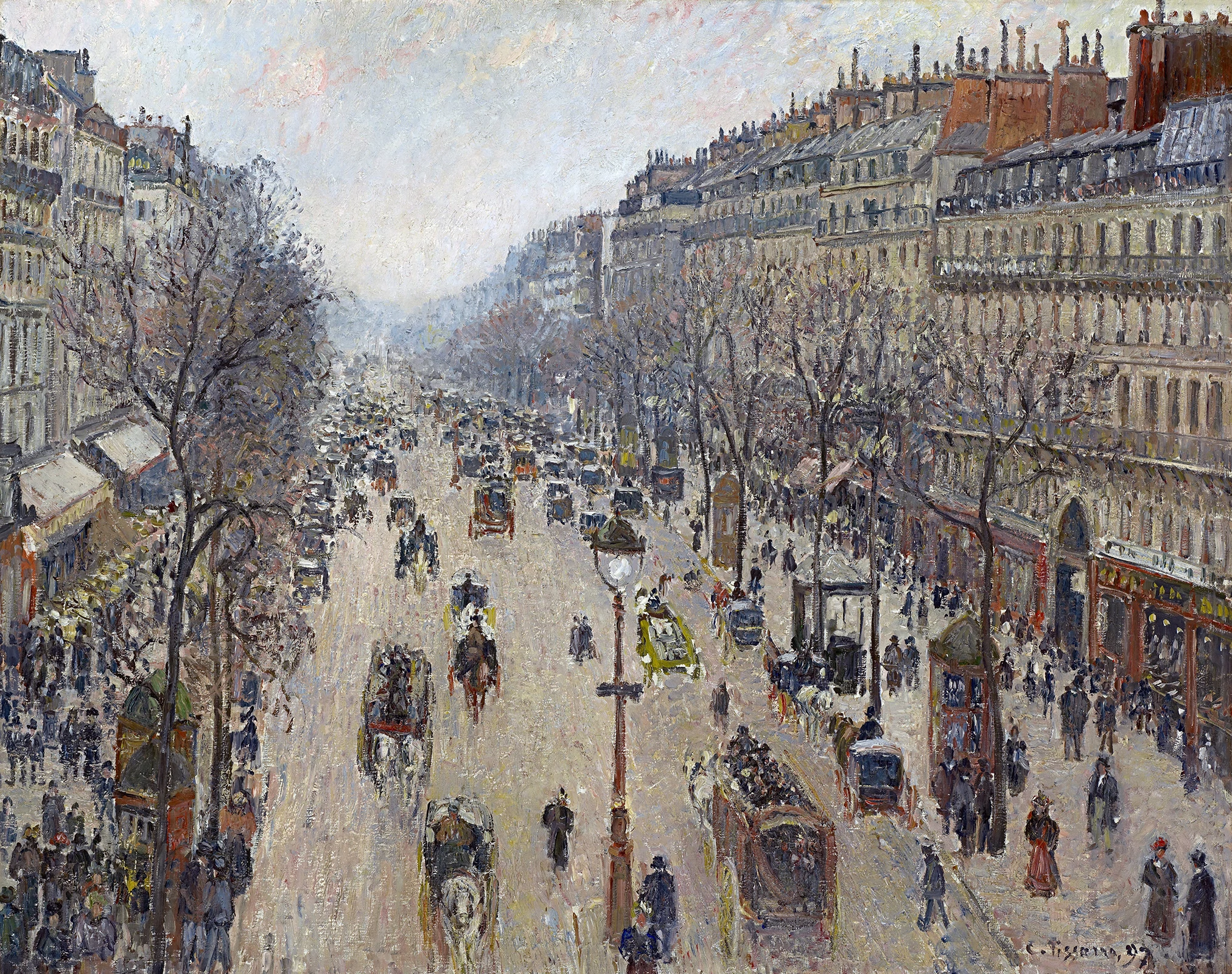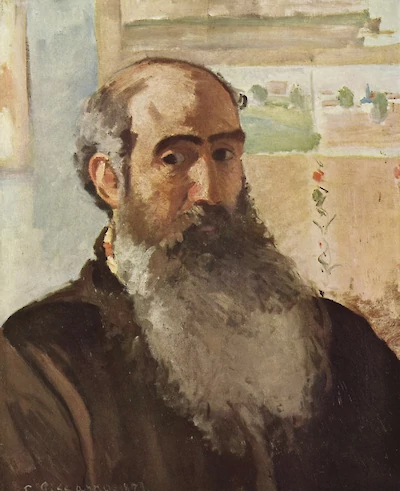

Camille Pissarro
Peaceful anarchist, advocate of the working man
1830 – 1903My dear Lucien,
First we got your telegram, the next day your letter came, and with the following mail your post card. Useless to mention that we had been waiting impatiently for a word from you announcing your arrival. We are very happy to learn that everything went well. I hope that you will continue to communicate with us regularly. Try to keep constantly in mind the fact that you have been presented with an excellent opportunity to learn the English language; for my part, despite the difficulties, I shall do all I can to help you in this task. What you observed, and mentioned in your letter, interests me much, though I know the route well, having taken it before. I recall perfectly those multicolored houses, and the desire I had at the time to interrupt my journey and make some interesting studies. But it would be a long trip indeed if one stopped at every attractive town or village, at every beautiful motif—although a painter could want nothing better than to be able to stop and then go on his way and always go on and stop. We are all quite well, including the children ; your mother is very busy and I continue to jog along surrounded with my unfinished paintings and drawings, seeking the rare bird whose plumage is resplendent with all the colors of the rainbow, whose song is musical and pure; perfection, as Degas would say, why not! — Don't forget to draw. 21
OSNY, FEBRUARY 20, 1833
My dear son,
You and Esther * have been to the National Gallery, you have seen the Turners,2 yet you don't mention them. Can it be that the famous painting The Railway, The Burial of the Painter Wilkie, the astonishing Seascape, at the Kensington Museum, the View of Saint Mark in Venice, the little sketches retouched with watercolors of fish and fishing equipment, etc., did not impress you? I do not budge from here, I work as much as I can on the landscapes. I already began and am at work on my picture of The Market [6 1 5] which I have changed completely. I work now and then on sketches for my exhibition, although I can hardly count on having it, for the political situation is so bad that we have to be prepared for the worst eventualities. The future is not rosy. In any case one hardly has leisure for painting when one feels the nation fighting to safeguard the republican government which it cost so much blood to establish.
OSNY, FEBRUARY 28, 1883
My dear son,
So now you are going to wear tails for the first time. It is a good thing you have the clothes. You will have embarrassments enough in an entirely new milieu, with strange customs and ways of behavior. What wonderful things to observe ! How I regret not to have seen the Whistler show; I would have liked to have been there as much for the fine drypoints as for the setting, which for Whistler has so much importance 5 he is even a bit too pretentious for me, aside from this I should say that for the room white and yellow is a charming combination. The fact is that we ourselves made the first experiments with colors : the room in which I showed was lilac, bordered with canary yellow. But we poor little rejected painters lack the means to carry out our con-cepts of decoration. As for urging Durand-Ruel 1 to hold an exhibition in a hall decorated by us, it would, I think, be wasted breath. You saw how I fought with him for white frames, and finally I had to abandon the idea. No! I do not think that Durand can be won over. — Whistler makes drypoints mostly, and sometimes regular etchings, but the suppleness you find in them, the pithiness and delicacy which charm you derive from the inking which is done by Whistler himself j no professional printer could substitute for him, for inking is an art in itself and completes the etched line. Now we would like to achieve suppleness before the printing. I saw two prints exhibited in Paris a year or two ago; they were rather delicate, meager and thin-looking, one would have to see a whole collection in order to judge them, for doubtless he has done some that are first rate. I reread your postscript on aesthetics. I wouldn't want to be an aesthete, at least like those across the Channel. Aestheticism is a kind of romanticism more or less combined with trickery, it means breaking for oneself a crooked road. They would have liked to make something like that out of impressionism, which really should be nothing more than a theory of observation, without entailing the loss of fantasy, freedom, grandeur, all that makes for great art. But not eccentricity to make sensitive people swoon.